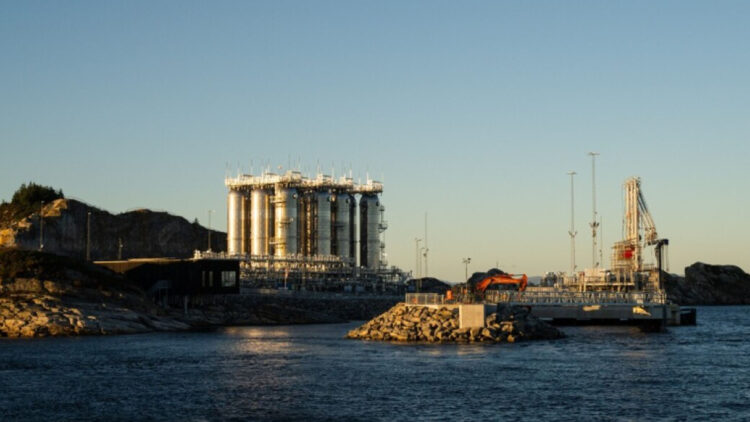In order to store up to five million tons of carbon dioxide under the North Sea, Norway is expanding the Northern Lights project, which is a part of Longship (CCS). To put it simply, captured CO2 is cooled to a liquid, transported to Øygarden, and injected deep underground to keep it out of the atmosphere. This carbon capture and storage (CCS) system was designed with actual industry in mind.
Phase 1 is currently producing roughly 1.5 million tons yearly; Phase 2, which was announced in 2025, intends to produce at least five million tons annually with additional ships transporting CO2 from throughout Europe, larger tanks at Øygarden, and new wells. Companies in Germany, the Netherlands, and even Poland are anticipated to ship their CO2 offshore to Norway by 2028 for long-term storage.
Northern Lights has been given €131 million through the Connecting Europe Facility (CEF) funding program, according to the European Commission. “I am very happy that the European Union has proposed to grant Northern Lights with CEF-funding. This confirms Northern Lights’s role as key for reaching European climate policy objectives, including contributing to a climate-neutral economy by 2050”, said Børre Jacobsen, Managing Director of Northern Lights.
Mission and timeline of the Northern Lights Expansion
Northern Lights is described as a viable, open-access network for the transportation and storage of carbon dioxide. By connecting multiple European industrial sites, it repurposes marine technology used for hydrocarbons to preserve the geology beneath the North Sea. About 1.5 million tons of CO2 are captured annually by Phase 1, which is enough to show the chain’s end-to-end functionality. Phase 2 increases capacity to a minimum of five million tons per year. Norway will expand above-ground storage at the Øygarden port, build new offshore injection wells, and boost shipping frequency to enable emitters to supply CO2 more frequently.
The plan is intended for use across international borders. Companies in Germany, the Netherlands, and perhaps Poland will be able to move captured CO2 to Norway for long-term underwater storage by 2028.
The benefits and dangers of undersea storage
After being caught and liquefied, CO2 from industrial locations goes to Øygarden in western Norway. Then, it passes via a pipeline that is about 100 kilometers long to an offshore location where it is injected 2,600 meters below the North Sea’s seafloor. CO2 is injected into deep saline aquifers through two wells, which will eventually grow to four. The gas is trapped by impermeable rock strata.
Improved sensor systems and satellites are used to monitor the reservoir’s movement and pressure in order to ensure that stored CO2 remains stable over time.
CCS can help industries that are taking longer to decarbonize, reuse overseas skills, and create jobs and exportable services for a green industry. As other sustainable energy options grow, it also provides an alternative. However, difficulties do exist. CCS is expensive. When compared to the overall emissions in Europe, even five million tons annually is insignificant. CCS may postpone more significant moves away from fossil fuels, according to some critics. Environmental organizations are concerned about storage facilities’ long-term stability and leaking.
A real-world experiment for a future with reduced carbon emissions
The Northern Lights project seems to be stronger with funding from the European Commission CEF.
Companies in Germany, the Netherlands, and potentially Poland will have a dependable route to permanent undersea storage if Phase 2 achieves at least five million tons annually and the 2028 cross-border plan succeeds… If outcomes are low, the takeaway will still be applicable: CCS might be helpful, but other methods need to work more quickly.
In any event, Norway is addressing climate change through practical engineering, and a step toward a more powerful sustainable energy grid.

